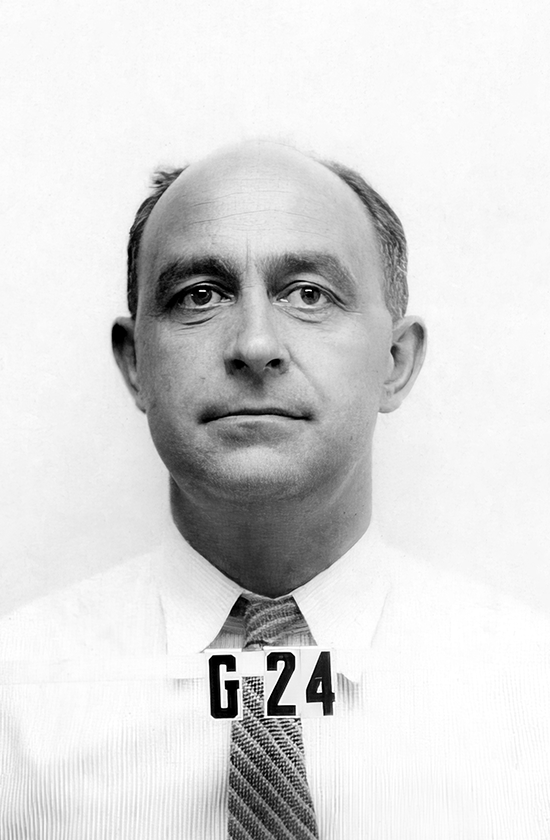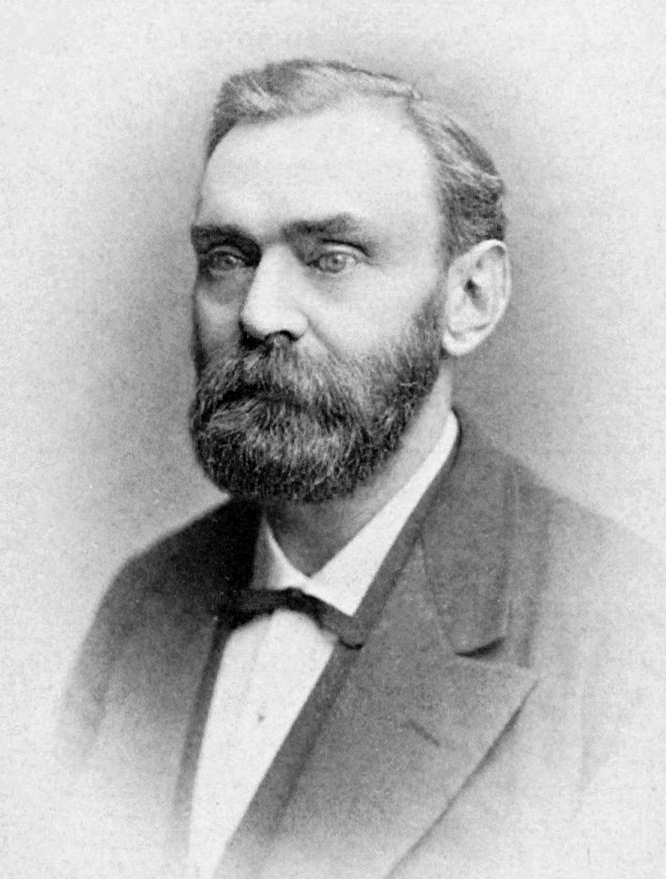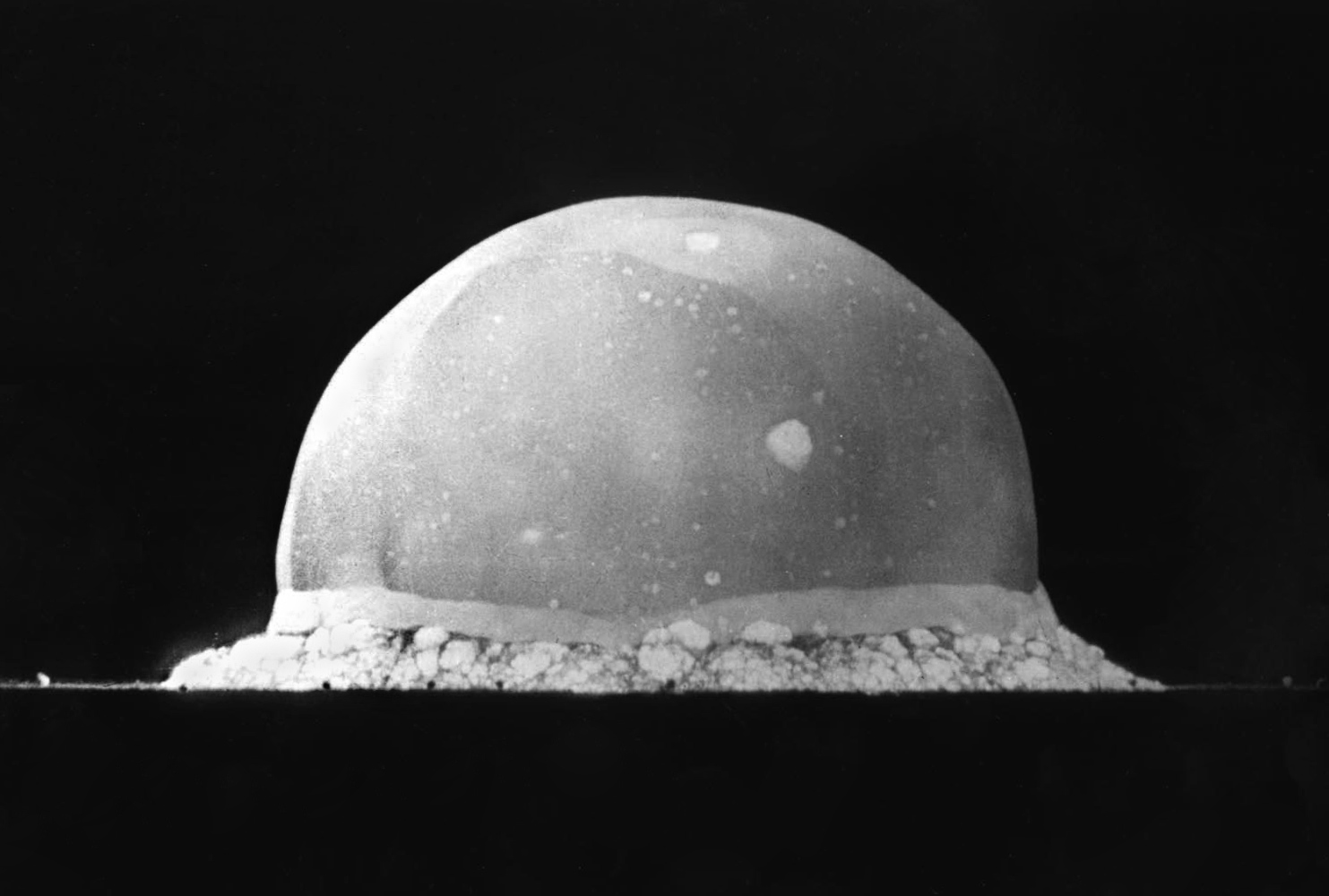|
Fermi Paradox
The Fermi paradox is the discrepancy between the lack of conclusive evidence of advanced extraterrestrial life and the apparently high likelihood of its existence. Those affirming the paradox generally conclude that if the conditions required for life to arise from non-living matter are as permissive as the available evidence on Earth indicates, then extraterrestrial life would be sufficiently common such that it would be implausible for it not to have been detected. The quandary takes its name from the Italian-American physicist Enrico Fermi: in the summer of 1950, Fermi was engaged in casual conversation about contemporary UFO reports and the possibility of faster-than-light travel with fellow physicists Edward Teller, Herbert York, and Emil Konopinski while the group was walking to lunch. The conversation moved on to other topics, until Fermi later blurted out during lunch, "But where is everybody?" ( the exact quote is uncertain.) [...More Info...] [...Related Items...] OR: [Wikipedia] [Google] [Baidu] |
Enrico Fermi Los Alamos
Enrico is both an Italian masculine given name and a surname, Enrico means homeowner, or king, derived from '' Heinrich'' of Germanic origin. It is also a given name in Ladino. Equivalents in other languages are Henry ( English), Henri ( French), Enrique (Spanish), Henrique ( Portuguese) and Hendrik (Dutch). Notable people with the name include: Given name * Enrico Albertosi (born 1939), Italian former football goalkeeper * Enrico Alfonso (born 1988), Italian football player * Enrico Alvino (1808–1872), Italian architect and urban designer * Enrico Annoni (born 1966), retired Italian professional footballer * Enrico Arrigoni (1894–1986), Italian individualist anarchist * Enrico Baj (1924–2003), Italian artist and art writer * Enrico Banducci (1922–2007), American impresario * Enrico Barone (1859–1924), Italian economist * Enrico Berlinguer (1923–1984), Italian politician * Enrico Bertaggia (born 1964), Italian former racing driver * Enrico Betti (1823–1892), Italia ... [...More Info...] [...Related Items...] OR: [Wikipedia] [Google] [Baidu] |
Science (journal)
''Science'' is the peer review, peer-reviewed academic journal of the American Association for the Advancement of Science (AAAS) and one of the world's top academic journals. It was first published in 1880, is currently circulated weekly and has a subscriber base of around 130,000. Because institutional subscriptions and online access serve a larger audience, its estimated readership is over 400,000 people. ''Science'' is based in Washington, D.C., United States, with a second office in Cambridge, UK. Contents The major focus of the journal is publishing important original scientific research and research reviews, but ''Science'' also publishes science-related news, opinions on science policy and other matters of interest to scientists and others who are concerned with the wide implications of science and technology. Unlike most scientific journals, which focus on a specific field, ''Science'' and its rival ''Nature (journal), Nature'' cover the full range of List of academ ... [...More Info...] [...Related Items...] OR: [Wikipedia] [Google] [Baidu] |
New York City
New York, often called New York City (NYC), is the most populous city in the United States, located at the southern tip of New York State on one of the world's largest natural harbors. The city comprises five boroughs, each coextensive with a respective county. The city is the geographical and demographic center of both the Northeast megalopolis and the New York metropolitan area, the largest metropolitan area in the United States by both population and urban area. New York is a global center of finance and commerce, culture, technology, entertainment and media, academics, and scientific output, the arts and fashion, and, as home to the headquarters of the United Nations, international diplomacy. With an estimated population in 2024 of 8,478,072 distributed over , the city is the most densely populated major city in the United States. New York City has more than double the population of Los Angeles, the nation's second-most populous city. [...More Info...] [...Related Items...] OR: [Wikipedia] [Google] [Baidu] |
Little Green Men
Little green men is the stereotypical portrayal of extraterrestrials as little humanoids with green skin and sometimes antennae on their heads. The term "little green men" came into popular usage in reference to aliens during the reports of flying saucers in the 1950s. In one classic case, the Kelly-Hopkinsville sighting in 1955, two rural Kentucky men described a supposed encounter with metallic-silver, somewhat humanoid-looking aliens no more than in height. Employing journalistic licence and deviating from the witnesses' accounts, '' The Evansville Courier'' used the term "little green men" in writing up the story. Other media then followed suit. History of the term Usage of the term clearly predates the 1955 incident; for example, in England reference to little green men or children dates back to the 12th century green children of Woolpit, although exactly when the term was first applied to extraterrestrial aliens has been difficult to pin down. In his historical sati ... [...More Info...] [...Related Items...] OR: [Wikipedia] [Google] [Baidu] |
Alan Dunn (cartoonist)
Alan Dunn (1900–1974) was a cartoonist known for his work in ''The New Yorker''. He also had architectural expertise and submitted work to the magazine ''Architectural Record''. He was married to fellow cartoonist, Mary Petty. Dunn studied at Columbia University, the National Academy of Design and the American Academy in Rome. Alan Dunn and Mary Petty Papers, Syracuse University He eventually became ''The New Yorkers most prolific illustrator, creating nine covers and nearly 2000 cartoons over 47 years. A cartoon of his is credited with inspiring the . Dunn and Petty donated their papers to |
Fermi Problem
A Fermi problem (or Fermi question, Fermi quiz), also known as an order-of-magnitude problem, is an estimation problem in physics or engineering education, designed to teach dimensional analysis or approximation of extreme scientific calculations. Fermi problems are usually back-of-the-envelope calculations. Fermi problems typically involve making justified guesses about quantities and their variance or lower and upper bounds. In some cases, order-of-magnitude estimates can also be derived using dimensional analysis. A Fermi estimate (or order-of-magnitude estimate, order estimation) is an estimate of an extreme scientific calculation. The estimation technique is named after physicist Enrico Fermi as he was known for his ability to make good approximate calculations with little or no actual data. Historical background An example is Enrico Fermi's estimate of the strength of the atomic bomb that detonated at the Trinity test, based on the distance traveled by pieces of paper ... [...More Info...] [...Related Items...] OR: [Wikipedia] [Google] [Baidu] |
Manhattan Project
The Manhattan Project was a research and development program undertaken during World War II to produce the first nuclear weapons. It was led by the United States in collaboration with the United Kingdom and Canada. From 1942 to 1946, the project was directed by Major General Leslie Groves of the United States Army Corps of Engineers, U.S. Army Corps of Engineers. Nuclear physicist J. Robert Oppenheimer was the director of the Los Alamos Laboratory that designed the bombs. The Army program was designated the Manhattan District, as its first headquarters were in Manhattan; the name gradually superseded the official codename, Development of Substitute Materials, for the entire project. The project absorbed its earlier British counterpart, Tube Alloys, and subsumed the program from the American civilian Office of Scientific Research and Development. The Manhattan Project employed nearly 130,000 people at its peak and cost nearly US$2 billion (equivalent to about $ b ... [...More Info...] [...Related Items...] OR: [Wikipedia] [Google] [Baidu] |
Chicago Pile-1
Chicago Pile-1 (CP-1) was the first artificial nuclear reactor. On 2 December 1942, the first human-made self-sustaining nuclear chain reaction was initiated in CP-1 during an experiment led by Enrico Fermi. The secret development of the reactor was the first major technical achievement for the Manhattan Project, the Allies of World War II, Allied effort to create nuclear weapons during World War II. Developed by the Metallurgical Laboratory at the University of Chicago, CP-1 was built under the west viewing stands of the original Stagg Field. Although the project's civilian and military leaders had misgivings about the possibility of a disastrous runaway reaction, they trusted Fermi's safety calculations and decided they could carry out the experiment in a densely populated area. Fermi described the reactor as "a crude pile of black bricks and wooden timbers". After a series of attempts, the successful reactor was assembled in November 1942 by a team of about 30 that, in addi ... [...More Info...] [...Related Items...] OR: [Wikipedia] [Google] [Baidu] |
Neutrinos
A neutrino ( ; denoted by the Greek letter ) is an elementary particle that interacts via the weak interaction and gravity. The neutrino is so named because it is electrically neutral and because its rest mass is so small ('' -ino'') that it was long thought to be zero. The rest mass of the neutrino is much smaller than that of the other known elementary particles (excluding massless particles). The weak force has a very short range, the gravitational interaction is extremely weak due to the very small mass of the neutrino, and neutrinos do not participate in the electromagnetic interaction or the strong interaction. Consequently, neutrinos typically pass through normal matter unimpeded and with no detectable effect. Weak interactions create neutrinos in one of three leptonic flavors: # electron neutrino, # muon neutrino, # tau neutrino, Each flavor is associated with the correspondingly named charged lepton. Although neutrinos were long believed to be massles ... [...More Info...] [...Related Items...] OR: [Wikipedia] [Google] [Baidu] |
Nobel Prize In Physics
The Nobel Prize in Physics () is an annual award given by the Royal Swedish Academy of Sciences for those who have made the most outstanding contributions to mankind in the field of physics. It is one of the five Nobel Prizes established by the will of Alfred Nobel in 1895 and awarded since 1901, the others being the Nobel Prize in Chemistry, Nobel Prize in Literature, Nobel Peace Prize, and Nobel Prize in Physiology or Medicine. Physics is traditionally the first award presented in the Nobel Prize ceremony. The prize consists of a medal along with a diploma and a certificate for the monetary award. The front side of the medal displays the same profile of Alfred Nobel depicted on the medals for Physics, Chemistry, and Literature. The first Nobel Prize in Physics was awarded to German physicist Wilhelm Röntgen in recognition of the extraordinary services he rendered by the discovery of X-rays. This award is administered by the Nobel Foundation and is widely regarded as the ... [...More Info...] [...Related Items...] OR: [Wikipedia] [Google] [Baidu] |
Los Alamos National Laboratory
Los Alamos National Laboratory (often shortened as Los Alamos and LANL) is one of the sixteen research and development Laboratory, laboratories of the United States Department of Energy National Laboratories, United States Department of Energy (DOE), located a short distance northwest of Santa Fe, New Mexico, in the Southwestern United States, American southwest. Best known for its central role in helping develop the First Atomic bomb, first atomic bomb, LANL is one of the world's largest and most advanced scientific institutions. Los Alamos was established in 1943 as Project Y, a top-secret site for designing nuclear weapons under the Manhattan Project during World War II.The site was variously called Los Alamos Laboratory and Los Alamos Scientific Laboratory. Chosen for its remote yet relatively accessible location, it served as the main hub for conducting and coordinating nuclear research, bringing together some of the world's most famous scientists, among them numerous Nobel ... [...More Info...] [...Related Items...] OR: [Wikipedia] [Google] [Baidu] |
Quarterly Journal Of The Royal Astronomical Society
''Astronomy & Geophysics'' (''A&G'') is a scientific journal and trade magazine published on behalf of the Royal Astronomical Society (RAS) by Oxford University Press. It is distributed bimonthly to members of the RAS. A&G publishes content of interest to professional astronomers and geophysicists, including: news reports, interviews, topical reviews, historical investigations, obituaries, meeting reports and updates on the activities of the RAS. Full-length articles are peer-reviewed, but A&G does not publish original research papers. A&G was established in 1997 as a glossy magazine replacement for the ''Quarterly Journal of the Royal Astronomical Society'' (QJRAS; 1960–1996); it continues the same volume numbering from QJRAS. The editor is Sue Bowler of the University of Leeds. Scope The journal covers astronomy, astrophysics, cosmology, planetary science, solar-terrestrial physics, global and regional geophysics, and the history of these subjects. It also publishes them ... [...More Info...] [...Related Items...] OR: [Wikipedia] [Google] [Baidu] |







